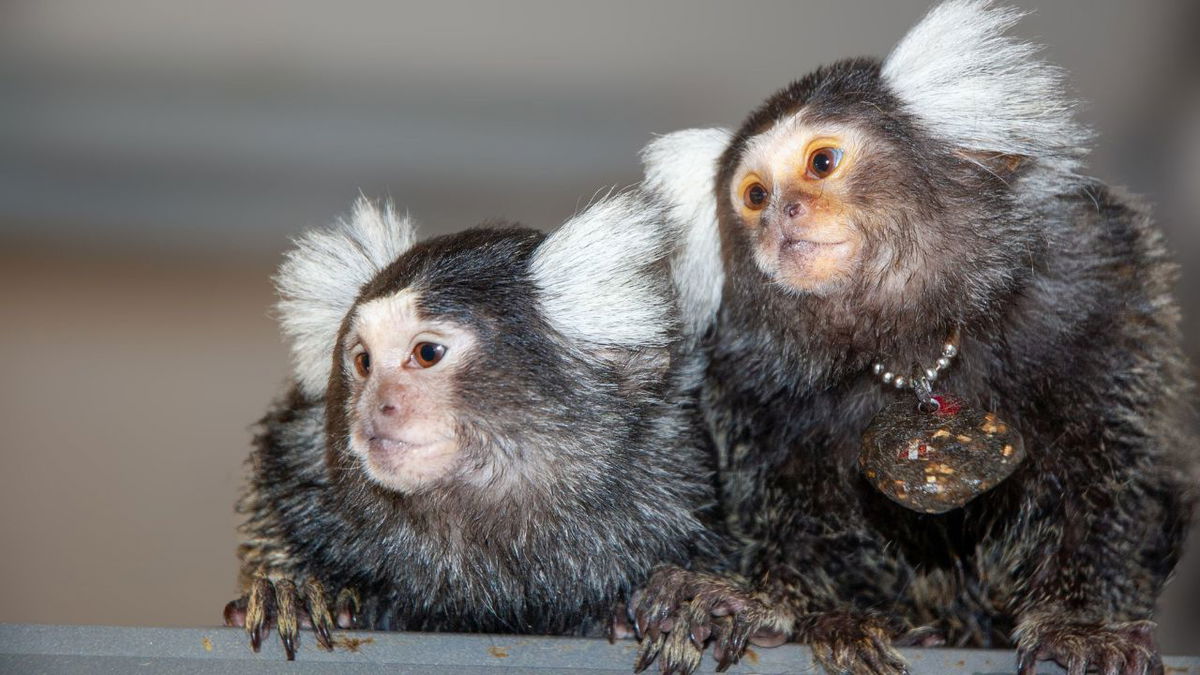These monkeys use names to communicate with each other, study finds

By Lianne Kolirin, CNN
(CNN) — Marmosets can communicate with one another by name and know when they are being addressed, joining a very short list of species exhibiting such behavior, and a first for non-human primates, a new study has found.
The monkeys use specific calls, known as “phee-calls,” to call each other, which scientists say is a “high cognitive” behavior pattern only previously observed in humans, dolphins and elephants.
The discovery, made by a team from the Hebrew University, is outlined in a study published Thursday in the journal Science.
“This is the first time that we have seen this in non-human primates,” David Omer, lead author and assistant professor at the university’s Safra Center for Brain Sciences (ELSC), told CNN Thursday.
The tree-dwelling primates are highly social animals and live in small groups in South America but researchers collected data at an animal facility at the university in Israel.
“The experiment was very simple,” Omer told CNN. “We just positioned two marmosets in the same room and positioned a visual barrier between them.
“When you do this they spontaneously start to engage in dialogue.”
Omer’s team recorded natural conversations between pairs of marmosets, as well as interactions with a computer system, which led them to conclude that the marmosets addressed specific individuals with the “phee calls.” Furthermore, the animals were able to discern when they were being called and responded more accurately in these instances.
Ten marmosets from three different family groups were recorded communicating during the process, highlighting “the complexity of social communication among marmosets,” Omer added in a press release.
He told CNN: “Until now, we thought that non-human primate vocalization is a genetically determined and non-flexible type of communication. But now we see that marmosets are capable of extremely flexible production of vocabulary.”
According to the study, marmosets are heavily reliant on vision but also display a “complex array of social calls” – of which the “phee call” is one. The calls are generally used to communicate when they are out of sight from each other.
As well as using different calls for different individuals, the marmosets were also found to be able to distinguish between calls directed at them and non-directed calls.
They were previously interpreted as a method of “self-localization,” according to Omer – in other words, a way to communicate their position with others. But the new study showed that the sounds were used as “specific calls to label and address specific individuals.”
The investigation also revealed that marmosets from the same family group used “similar vocal labels to address different individuals” and also employed “similar sound features to code different names,” the release adds. This practice, according to the study, resembles the use of names and dialects in humans.
Interestingly, the learning pattern could also be seen with adult marmosets who were not blood relatives, suggesting that they learn vocal labels and dialects from other members of the same group.
Omer told CNN: “We can say for sure that there was a learning process occurring here – so that they learn the names for the family members – and that it’s not genetic.”
Omer and his colleagues believe that their research provides new insights into how human language and social communication might have evolved.
He told CNN: “Until now we thought that human language was a big bang phenomenon that happened out of nowhere and only in humans – which is a complete contradiction to evolutionary theory.
“This finding, together with other findings, for the first time suggests that there were precursors for language development in non-human primates and we can find evidence for an evolutionary process.”
Earlier this year, another study found that African elephants may address each other using individualized calls that resemble the personal names used by humans.
The lead author of that study, Mickey Pardo, an animal behaviorist and postdoctoral fellow at Cornell University in New York, told CNN that the marmoset paper was “a very thorough piece of experimental work,” which “challenges the longstanding but outdated idea that humans are the only primate capable of vocal learning.”
However, Pardo expressed reservations about the idea “that different marmosets use the same name for the same receiver.” He said that his team had reached a similar conclusion in their elephant study before conducting further research which undermined their findings.
He said: “The more species we can discover that have names or something similar, the more opportunity we will have to use the comparative method to learn about the selection pressures that may have driven the evolution of names in our own species.”
Sign up for CNN’s Wonder Theory science newsletter. Explore the universe with news on fascinating discoveries, scientific advancements and more
The-CNN-Wire
™ & © 2024 Cable News Network, Inc., a Warner Bros. Discovery Company. All rights reserved.


